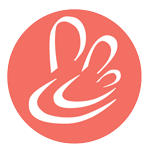A small hole is made in the shell surrounding the embryo just prior to transferring the embryo into the uterus.

Glossary
Assisted hatching
Assisted reproductive technology (ART)
A technology , technique, or therapy that provides assistance to a couple trying to achieving pregnancy, such as superovulation, Intrauterine Insemination (IUI), or in vitro fertilization (IVF).
Blastocyst culture
Extended or prolonged growth of embryos in the laboratory to Day 5 or 6 of embryo development.
Cryopreservation
A technique for freezing extra embryos to preserve them for use at a later date. Cryopreserved embryos are also referred to as frozen embryos.
Egg retrieval
Egg Retrieval (also called Oocyte Retrieval) is a procedure for collecting the eggs contained in the ovaries. This is done under mild anesthesia with an ultrasound-guided needle through the vaginal wall.
Progesterone
Progesterone (P4) is a hormone that is normally produced by the corpus luteum (that portion of an egg follicle that remains on the ovary after ovulation). Progesterone is important in transforming the uterine lining from one that is growing into one that is preparing for embryo implantation. Progesterone is administered by vaginal suppository or intramuscular injection.
Embryo transfer (ET)
The placement of embryos into the uterus through the cervix using a thin catheter.
Intracytoplasmic sperm injection, or ICSI
ICSI is a procedure in which a single sperm is injected directly into an egg for fertilization.
Intrauterine insemination (IUI)
A procedure in which a concentrated, washed sperm sample is instilled into the uterus using a thin catheter.
Ovarian monitoring
The use of ultrasound and/or blood tests to monitor ovarian follicle development and hormone production.
Ovulation Induction or Controlled Ovarian Stimulation
The use of oral or injectable hormones to stimulate the ovaries to develop numerous follicles/eggs in a single cycle.
Medication descriptions
There are a number of medications you may use during fertility treatments. This section lists and describes some of the medications we currently use at our center. From time to time, new medications are introduced, and we will try to keep you informed about them as we begin to use them in our program. If you have any questions regarding any of the medications you are using, please ask a member of our clinical staff.
Estrogen
Estrogen is a hormone that plays an integral role in reproduction. It is produced by growing follicles, the corpus luteum (that portion of an egg follicle that remains on the ovary after ovulation), and the placenta. It is used in fertility treatments in many different situations, including development of the uterine lining.
Ganirelix or Cetrotide
These are GnRH antagonists administered subcutaneously to prevent ovulation. Your individualized protocol will inform you when to start these medications.
Gonadotropins
Gonadotropins are hormones secreted by the pituitary gland. They include FSH and LH. FSH is responsible for the selection and growth of developing eggs in your ovaries. LH plays an important role in the final maturation of the eggs and also causes ovulation to occur during a natural menstrual cycle.
All gonadotropins can be injected subcutaneously. Some come as a powder that must be mixed with sterile saline or water prior to use, whereas others come premixed. The Follistim Pen uses premixed cartridges of Follicle Stimulating Hormone (FSH) and a reusable pen delivery system. The Gonal-F Pen uses premixed cartridges of FSH and a disposable pen delivery system. Gonal-F also comes in a multi-dose vial. Bravelle (FSH) and Menopur (FSH + LH) powder must be reconstituted prior to being injected with a syringe. Your physician will select the drug and dosages that are most appropriate for you and our clinical staff will provide you with instructions on how to use them.
During the course of your IVF cycle, we will closely monitor the status of your ovarian response to these medications with both ultrasound and blood hormone levels (e.g., estradiol and progesterone). We may change your medication dose throughout the cycle. At times, a cycle that is not producing a sufficient number of follicles may be canceled.
Gonadotropin-releasing hormone (GnRH) agonists and antagonists
GnRH agonists have been used in ART since the 1980s to prevent ovulation. GnRH antagonists have been used since the late 1990s and also prevent ovulation. The agonists are typically started 7–14 days prior to starting the fertility (gonadotropin) injections, while the antagonists typically are started after 5–8 days of being on the fertility injections. Different clinical scenarios will dictate if you are prescribed an agonist or antagonist.
Human chorionic gonadotropin
Human Chorionic Gonadotropin (hCG) is the hormone generated by a pregnancy, and its actions in the body are similar to LH. hCG is used in an ART cycle to mimic the normal midcycle LH surge, which is necessary to facilitate the final maturation process of the egg. The timing between administering hCG and retrieving your egg is carefully planned so you do not ovulate before we collect your eggs. Your egg retrieval is done before you ovulate your eggs. Our clinical staff will instruct you on both the date and time you are to take your hCG.
Your treatment protocol may also include diluted or low-dose hCG to add a small steady dose of LH during the growth and maturation of your follicles and eggs. Diluted hCG is administered subcutaneously using an insulin syringe. It should be kept refrigerated until used.
Lupron
Lupron is a GnRH agonist that may be administered by subcutaneous injection once or twice daily. It is usually started prior to gonadotropins, and it’s continued until you are ready for egg retrieval.
Luteal Estrace
Estrace—a synthetic estrogen tablet—may be prescribed during the luteal phase (the last 7–10 days) of your menstrual cycle. You usually take this 2-mg tablet orally twice per day.
Oral contraceptives
Oral contraceptives (OCPs or birth control pills) contain both synthetic estrogen and progesterone-like compounds. OCPs are sometimes used to facilitate scheduling and starting your ART cycle. There are a variety of oral contraceptives on the market, many of which can be used for our purposes.
Progesterone
Progesterone (P4) is a hormone that is normally produced by the corpus luteum (that portion of an egg follicle that remains on the ovary after ovulation). Progesterone is important in transforming the uterine lining from one that is growing into one that is preparing for embryo implantation. Progesterone is administered by vaginal suppository or intramuscular injection.

